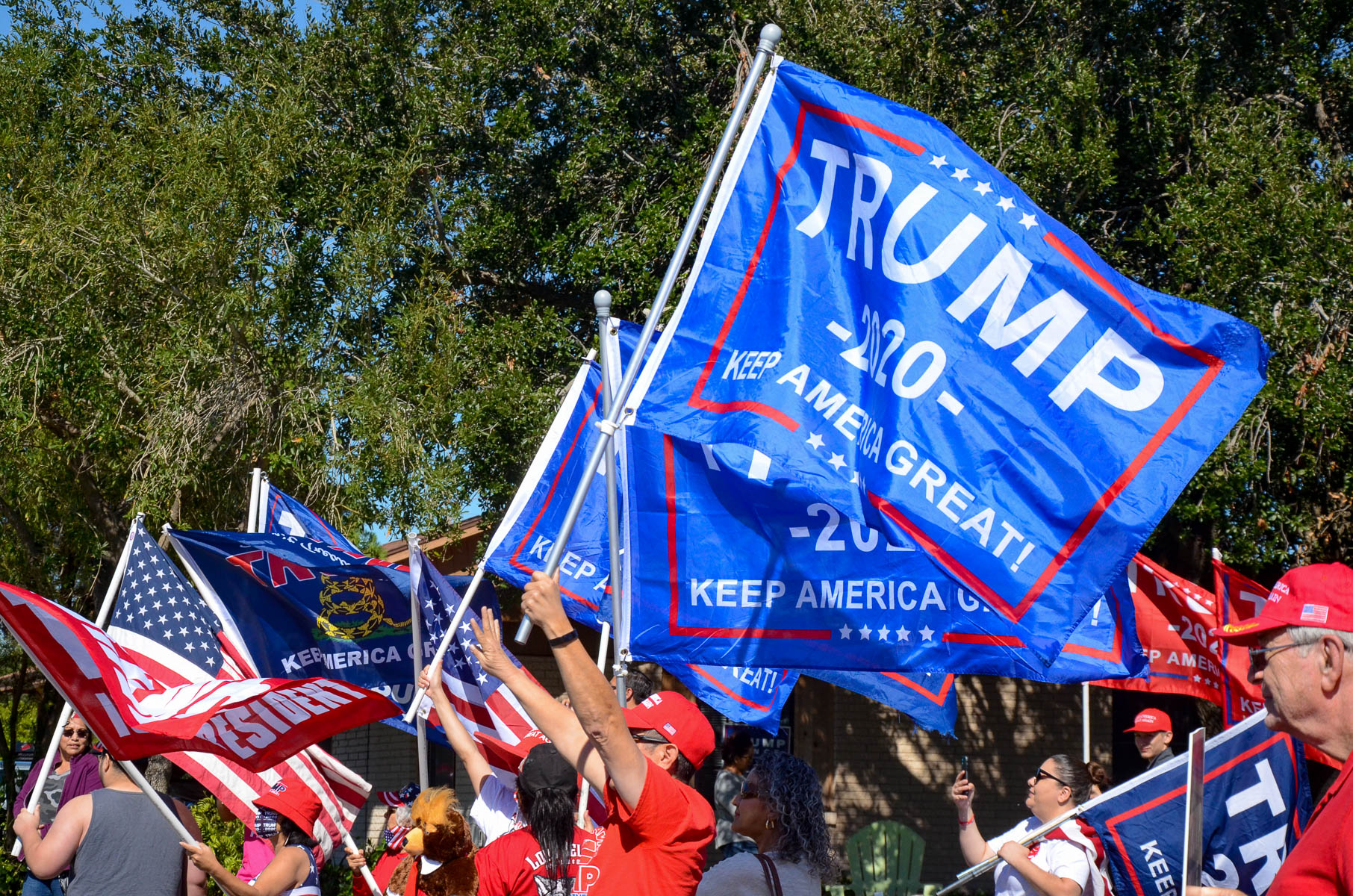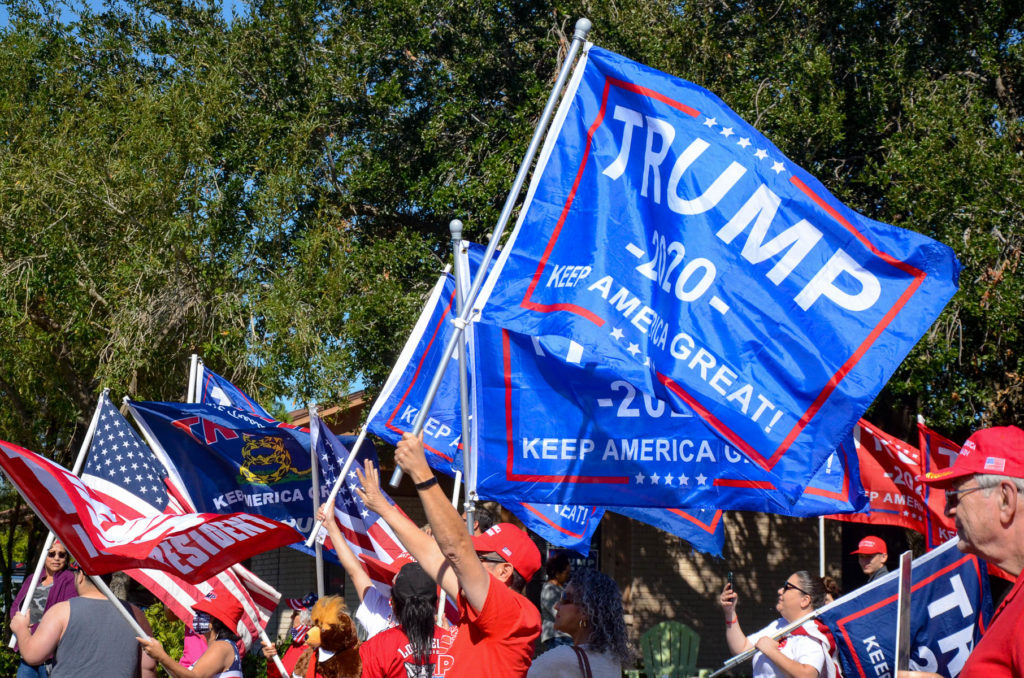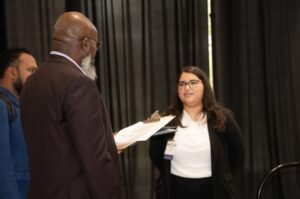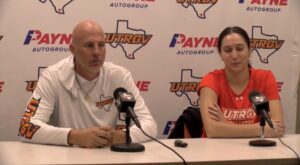

The thought of Nov. 3 marking the end of a contentious battle for the White House faded when President Donald Trump vowed to contest election results and not concede to President-elect Joe Biden.
The president and voters like those in the Rio Grande Valley likely hadn’t anticipated loss. Trump spoke to the press and staff at his campaign headquarters on Election Day morning saying “losing is never easy” for him. It became more evident when Trump spoke from the East Room of the White House on Election Night stating he had won the election before an official winner was announced.
More than a month after Election Day, Trump and his campaign team have continued to allege voter fraud in various states such as Georgia and Wisconsin. Supporters of the president held rallies in Valley cities such as Harlingen days after the election with signs saying “count every legal vote”, echoing Trump’s statements on voter fraud.
When Attorney General William Barr told the Associated Press there was no evidence of voter fraud, Rudy Giuliani and Jenna Ellis as part of Trump’s legal team disagreed with Barr and stated they had uncovered evidence they did not feel the Justice Department was investigating.
Some allegations come from absentee votes that the President says was a scheme to steal the election, as the coronavirus pandemic made voters choose between casting their ballots in person or mail in their vote for health and safety.
UTRGV Associate Professor of Political Science Natasha Altema McNeely said mail-in votes appealed to many voters who were a part of a demographic with risk of contraction.
“I think that a huge appeal of the mail-in ballot option for people was because we’re in a pandemic, right, and the possible risk of getting exposed while in line or interacting with the elections workers and whatnot and so I think that there is a sizable portion the electorate, who is part of groups who are at risk, whether it’s age, whether it’s health.”
A winner was not known for almost four days after Election Day as states awaited results from counting mail-in ballots or calls for recounts by the president leading to tension between both sides of the political spectrum. Such example is the Maricopa County vote-counting site where pro-Trump supporters gathered, wielding rifles and chanting “count the votes”.
McNeely said the public assumption from media projections creates tension amid an already lengthy process.
“But what they don’t understand is that actually these projections are made by media outlets based on projections and models. They’re not based on actual finalized counts that have been validated by each state’s Secretary of State’s office and I think that lack of understanding and realization really create a lot of tension.”
When the AP announced Biden as the winner on Nov. 7, Trump tweeted he had won the election. He then released a statement via his campaign stating his team would begin a legal battle on Nov. 9.
McNeely responded to the hypothetical question, would President Trump have still contested the election if mail-in ballots and the pandemic were not factors in this election cycle.
“President Trump did not anticipate a loss. He expected to win. And so, it seemed, it appears that he would have contested the election, regardless if there was a pandemic or not…But I think it would have happened in a similar vein, of course, or in a different maybe not quite targeting let’s say the mail in ballots, but he would have found something else to target, even if we weren’t in a pandemic, because he’s always assumed he was going to win.”
President of the GOP Club of Brownsville Luis Cavasos said he believes that without the pandemic, there would have been a different outcome.
“You know, Donald Trump would have just swiped Joe Biden off the floor. I believe, I think with this pandemic and really did a lot of, it hurt Trump in some ways I think it hurt the party a bit.”
Cavasos said he was once a Democrat but switched party alliances when he felt the party no longer served his needs.
“Unfortunately, it didn’t, you know, and so I decided to take up and turn to become a conservative Republican and you know, ever since that I really understood the country a lot more. I understand the way the country works.”
The Rio Grande Valley has been a Democratic stronghold in a traditionally conservative state. This year however, the vote share between Democratic and Republican voters shortened across the Valley.
Cameron County saw an increase in conservative voters this election cycle, shifting the voter margin to only 13% compared to a 42% voter margin in 2016. Hidalgo County similarly saw only a 17% voter margin between Biden and Trump, a change of 32% difference from 2016.
Cavasos believes the shift to a higher conservative vote share this election comes from people wanting to change the status quo.
“We want something different, we want to change, we’re tired of the status quo. We’re tired of the democrats always saying. We’re tired of having a full democratic control, we’ve been under democratic control in the Valley for over 100 years 100 years literally.”
McNeely said she believes the Valley could have more Republican voters if the right candidate runs.
“I think Republicans have realized that they can probably get a lot of support if they run candidates who are appealing and who are able to appeal to Valley residents positions on certain issues…if they can find a candidate who’s able to appeal to Valley residents positions on border security and abortion or other social policy issues that they might have a fighting chance down here as well.”
McNeely also notes that although the Valley may be a Democratic stronghold, voter ideologies tend to be conservative.
“The Valley is blue, but it bleeds red right and there’s a number of explanations for this so meaning that ideoglocially there is conservatism here even if people identify as partisanship. One of the main explanations of this is like historically the Valley has been blue. When you look at, and this is applicable across and many studies that have looked at the latino electorate, right, that when you examine how long people have been here so across generations, you see that as as the generations have been in the United States longer they do become more conservative, you can look at socio-economic status, those who have higher income, higher education tend to be more conservative among Hispanics, we’ve seen the research supports this.”
Cameron County Democratic Party chair Jared Hockema believes outreach from the Democratic party across the country could be a reason why the vote share changed during the recent election.
“I think there were some issues with outreach, engagement and messaging that may have allowed that turnout to not be even greater than it was, it could’ve been greater…it’s obvious when you have folks that are doing the outreach and the engagement that they’re able to attract the trust of the local voters like we always have as the Democratic party here in the Valley.”
Hockema suggests that voters who may have been attracted to the Republican message on the economy may have been turned off by Trump.
“If you look at our increased performance in suburban areas, a lot of that is driven by people who may have been attracted to the economic message of the Republican party but certainly weren’t attracted to the candidate they had nor to the way that that party is conducting itself.”
Hockema said voters are more inclined to trust a candidate when they hear from them directly rather than through a party.
“In my view, the messaging really needs to come from the candidate because they’re the people that the voters are voting for…If you look at Hillary Clinton, she is an extremely popular figure across the border, she is farther left than Joe Biden and Kamala Harris on a lot of issues including on the issue of choice yet she got huge majority in these counties. Why was that? Was it because of the policy or because people trusted her? And they understood that an issue like abortion that there’s the public messaging and private feelings that people have. A lot of people realize that the question is really who do you really trust more to make decisions…and people were able to trust Hillary Clinton on that issue because they knew her.”
Hockema said he believes the Democratic Party will continue to strengthen in the Valley in the future.
“Well, it’s really strong. We’ll continue to be the majority party in the next election. We’re going to have a stronger result than we had this time…I fully expect we’re going to have a stronger result next year.”
Inauguration Day for President-elect Biden and Vice President-elect Kamala Harris is scheduled for Wed., Jan. 20.
For Vaquero News, I’m Justin Elizalde.



